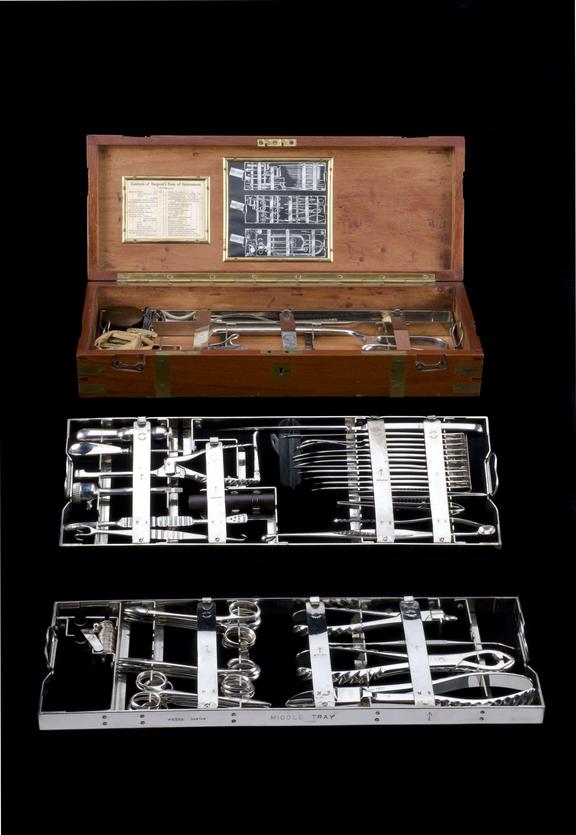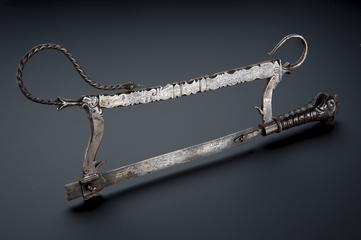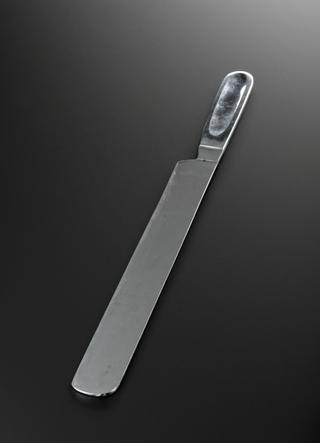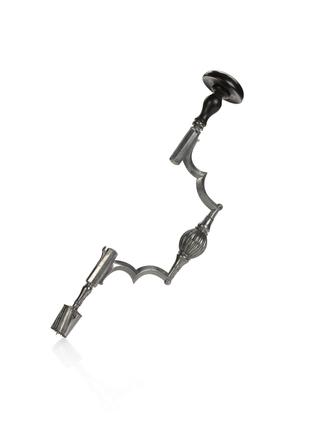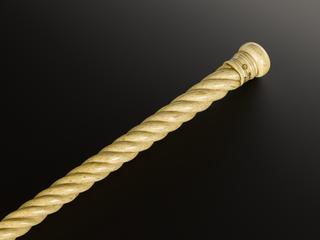Surgical instrument set, Royal Army Medical Corps (R.A.M.C.) military issue, with three trays of instruments in sterilizable trays in brass bound mahogany case, by J. Weiss and Sons Ltd., London, 1917 for use by British forces during the First World War, 1914-1918.
The scale of the First World War and the devastating effects of industrialised weaponry used by the fighting nations produced overwhelming numbers of casualties. For British forces engaged on the Western Front battlefields, those not killed outright could be left with complex wounds that could often become infected from the former agricultural lands that were being fought over. Keeping surgical equipment sterile in such environments was a constant challenge for medical personnel.
This surgical instrument set was made by J. Weiss and Sons Ltd, a well-known manufacturer with their origins in the 1780s. Dating from 1917 and described as being of military issue for the Royal Army Medical Corps (RAMC), the set is efficiently designed to contain a large number of instruments within a relatively small wooden box. The instruments are largely of simple design, often cast from single pieces of metal and they can be fitted into one of three removable trays. These trays were constructed to allow them, and the instruments they carry, to be easily lowered into the boiling water of a steriliser.
The Royal Army Medical Corps Medical was largely responsible for the medical care for British forces during the First World War. They aimed to maintain the health of soldiers in the field, with units responsible for the treatment and evacuation of battlefield casualties.
